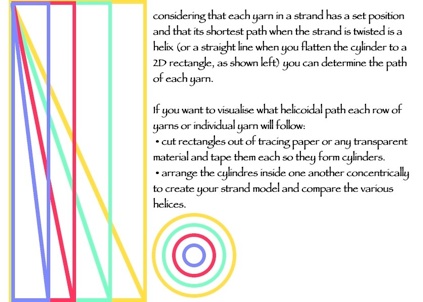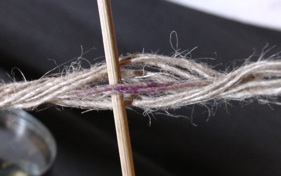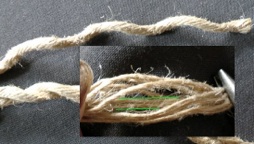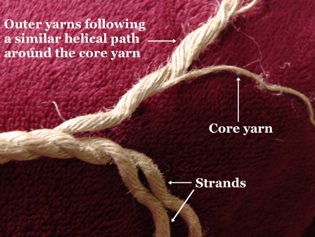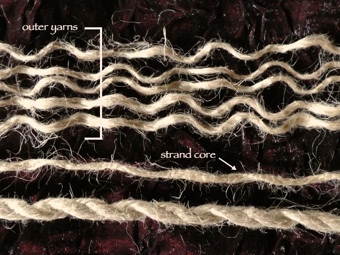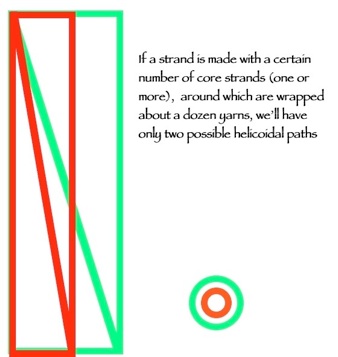Strands with a core
Most, if not all the rope made in Japan seem to be constructed this way. The strands of such ropes are made of yarns twisted around 1 or 2 central core yarns. As the core yarns are not affected by the twisting, they are always shorter than the outer yarns. Their function is to provide a physical axis around which the outer yarns lay parallel to one another, forming a virtual ribbon of yarns wrapped around the central axis.

